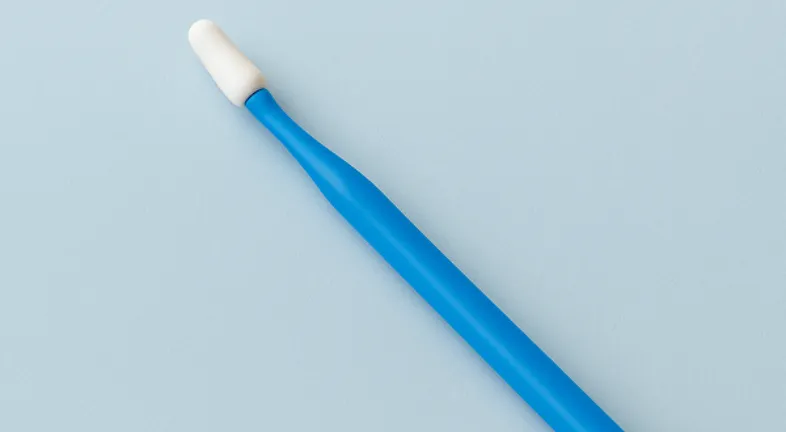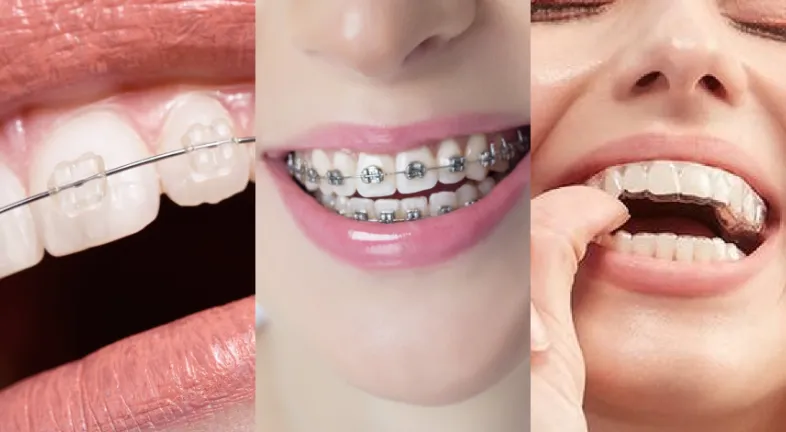
Getting braces is a big step toward achieving your teeth straightening dream. However, the initial adjustment period can be challenging as your mouth adapts to the new dental appliance. While the end result is worth it, knowing how to go on in life with braces can make the journey smoother and more comfortable.
At their core, braces are orthodontic devices designed to correct misaligned teeth and improve oral health. But once the braces are on, it’s normal to feel some discomfort, soreness, and sensitivity. Adjusting to these changes takes time, patience, and a few key strategies to make the experience less stressful.
The adjustment period for braces typically lasts about 1 to 2 weeks. During this time, you may experience soreness, tightness, and increased sensitivity in your teeth and gums. It’s natural for your mouth to feel strange at first, especially as your teeth begin to shift into their new positions.
This sensation is caused by the gentle but continuous pressure that braces apply to realign your teeth. While it may feel uncomfortable, it’s a sign that your treatment is working. The good news is that as your mouth adjusts, the discomfort will gradually fade, and you’ll become more accustomed to the feeling of wearing braces.
The first few days after getting braces can be uncomfortable, but there are several effective ways to reduce soreness and irritation. While each person's experience is different, the following tips can provide much-needed relief:
These remedies help reduce the initial discomfort and allow you to focus on adjusting to life with braces. After the first week, you’ll notice that the soreness becomes less intense as your mouth gets used to the new hardware.
Oral hygiene becomes even more important when you have braces. Food particles and plaque can get stuck in the brackets, wires, and crevices of your braces. If not cleaned properly, this can lead to cavities, gum disease, and staining. Maintaining clean braces requires patience, consistency, and the right dental tools.
Brushing your teeth with braces is different from brushing without them. With brackets and wires in the way, it’s crucial to clean thoroughly around each bracket to prevent plaque buildup. A soft-bristled toothbrush or an electric toothbrush can be used to clean teeth while being gentle on the gums.
To brush effectively with braces, follow these steps:
If brushing feels inconvenient at first, remember that it’s essential for maintaining healthy teeth and gums during orthodontic treatment. Failing to clean your teeth properly while wearing braces can lead to white spots, cavities, and gum disease.

Flossing with braces may seem tricky, but it’s a crucial part of your oral hygiene routine. Traditional floss can’t easily fit between the wires, so you’ll need to use tools that are designed specifically for braces.
Here are some helpful tools for flossing with braces:
Flossing at least once a day will prevent plaque buildup, which can cause gum disease and cavities. Although it requires patience and effort, consistent flossing will keep your gums healthy throughout the course of your treatment.
For many people, getting braces means adjusting to a new appearance, which can impact self-confidence. While braces are a temporary part of life, they may cause some people to feel self-conscious about how they look in social settings. But with the right approach, you can maintain your confidence and embrace your braces as part of your self-improvement journey.
Read our detailed blog on Alternative to Braces in 2025: What's Your Best Option.
Confidence with braces starts with shifting your mindset. Instead of viewing braces as a burden, think of them as a sign of progress toward teeth straightening. Here’s how you can feel more confident while wearing braces:
Feeling good about your braces comes from within. When you feel proud of your decision to improve your smile, it becomes easier to stay confident in social situations.
Eating out with friends and family is one of the more challenging social experiences for people with braces. It’s natural to worry about food getting stuck in your brackets or being unable to chew certain foods. However, with a little preparation, you can eat with confidence.
Here’s how to handle dining out with braces:
With these simple strategies, you can dine out with confidence, knowing you’re prepared for any situation. Over time, eating out will become second nature.
One of the biggest lifestyle changes after getting braces is learning what foods you can and cannot eat. Certain foods pose a risk of damaging the wires and brackets, which can extend your treatment time and increase orthodontic visits.
Sticky, chewy, and hard foods should be avoided at all costs. These foods can damage the brackets, bend the wires, or get lodged in tight spaces. Examples include:
These foods can make cleaning your braces more difficult and may cause emergency orthodontic visits if brackets or wires break.
Thankfully, there are plenty of braces-friendly foods to enjoy. These foods are softer, easier to chew, and less likely to damage your braces. Some good options include:
Cutting large foods into smaller pieces can also make eating easier and safer for your braces. While it may feel like a big change at first, following these guidelines will protect your braces and prevent treatment delays.
Keeping your braces clean is essential for maintaining good oral health during your treatment. Braces have small crevices where plaque and food particles can build up, increasing the risk of cavities and gum disease.

Brushing with braces requires more time and effort than regular brushing. Since brackets and wires cover parts of the teeth, you’ll need to be more thorough to clean around them properly.
To brush effectively, follow these steps:
Failing to brush properly can lead to white spots on your teeth, cavities, and bad breath. Consistency is key to maintaining a healthy smile throughout treatment.
Mouthwash adds an extra layer of protection. It kills bacteria, freshens breath, and helps reduce plaque buildup. Choose an antibacterial mouthwash, especially one recommended by your orthodontist. Rinsing once daily can support your oral hygiene routine.
Sometimes, accidents happen with braces. A loose bracket or a poking wire can cause discomfort and may require immediate attention. Knowing how to handle these situations can reduce stress and keep you on track.
A broken bracket is one of the most common issues people experience with braces. It can happen if you bite into hard food or if the adhesive weakens. If a bracket becomes loose:
Acting quickly ensures your treatment stays on schedule and avoids additional discomfort.
Poking wires can irritate the inside of your cheeks or gums. This often happens when the wires shift as your teeth move. If a wire is poking you:
This small issue is common and easy to manage with a few at-home adjustments.
Spacers are small rubber bands placed between your teeth to create space for orthodontic bands. Sometimes, these spacers may fall out. If this happens:
Spacers are temporary, and losing one may not affect your treatment. However, it’s best to notify your orthodontist for guidance.
Wearing braces may affect your self-confidence at first, especially since it changes the way your smile looks. However, it’s important to remember that braces are only temporary, and they symbolize a step toward a healthier, straighter smile.
It’s normal to feel self-conscious about wearing braces, but you can maintain your confidence by focusing on the positive. Instead of hiding your smile, embrace the journey toward your new smile. Here are some tips to stay confident:
Confidence comes from within. By embracing your braces as part of a self-improvement journey, you’ll feel more comfortable in social situations.
Some people worry about how their braces look during social events. Whether it’s a date, a party, or a big presentation, it’s natural to feel self-conscious. To boost your confidence:
These small actions will make you feel more prepared and less anxious in social settings.
Living with braces may come with challenges, but each adjustment is a step closer to a straighter, healthier smile. From managing food choices to maintaining daily oral hygiene, small efforts can make a big difference in your overall experience.
While the process requires patience, it’s important to remember that braces are temporary, but the results are permanent. Staying consistent with care and following your orthodontist’s advice will ensure a smoother treatment journey.




Curated the best for your knowledge
.webp) Mouthwash for Gums: What to Choose & Why
Mouthwash for Gums: What to Choose & WhyYou know the feeling when your gums suddenly have a meltdown? A little swelling, a little bleeding, and you are down the rabbit hole on Google at 3 a.m., trying to find the best mouthwash for gums. It happens. Gums can be finicky little guys. They deserve some love, some care, and sometimes a splash of minty freshness. But not all mouthwashes are created equally. Some are just flavored water, acting like they are helping. Some are awesome "fight germs" formulations that your dentist wishes everyone used. In this article we are going to break down what’s is the best mouthwash for your gums.
Read More What Are Gum Simulators and How Do They Improve Oral Health?
What Are Gum Simulators and How Do They Improve Oral Health?When trying to maintain a perfectly healthy smile, most people tend to focus on proper brushing and regular flossing, but there's another underrated tool that can be extremely helpful in keeping your mouth healthy. The gum stimulator. Though it may sound like a complicated dental instrument, a gum stimulator is actually a fairly simple yet effective tool. It's designed to strengthen and massage your gums while removing plaque from areas that are tough to clean. It does all of this while boosting blood circulation in your gums.
Read More What Are the Best Ways to Straighten Your Teeth?
What Are the Best Ways to Straighten Your Teeth?Teeth straightening is not just limited to cosmetic concerns, but it also helps resolve any of the functional issues, including bite alignment. Dental misalignments have become common among individuals of all ages. Regardless of whether you are dealing with crowded teeth, gapped teeth, or any other dental issues, there are now various ways to straighten teeth. The advancements in dentistry have introduced a range of options. From braces vs aligners to other orthodontic devices, teeth straightening has never been easier. In this blog, let us help you explore the best ways to straighten teeth.
Read MoreQuick Links

Heading